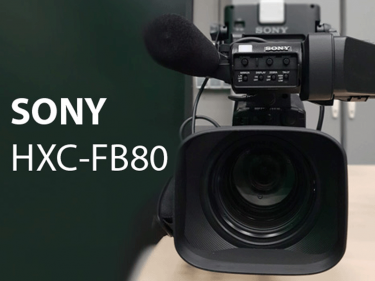| Українська | English | |||||||||||
|
|||||||||||
| News | About company | Service-centre | OB Van/SNG Rental | NextGen Energy Solutions | Contact us |
|
|
Engineering Service, Inc.
» News News In TM Broadcast we had the opportunity to test Sony’s catalogue entry model in studio cameras. This laboratory comprises a HXC-FB80 camera head with the relevant HXCU-FB80 CCU, and the RCP-1500 OCP panel. Let us see each of these items in more detail.
HXC-FB80 camera The first thing worth noting about the FB80 is simplicity. A robust body with basic functions holds an electronic system of the highest quality. As all other Sony systems, the FB80 comes equipped with three 2/3” Full HD ExmorTM CMOS sensors that offer excellent sensitivity (F13 at 50Hz and F12 at 59.94Hz in 1080 mode) with a normal -60dB signal-noise ratio. The HXC-FB80 is Sony’s gateway to the 4K world. This camera is able to easily generate 3G-SDI signals as 1080/50p and 59.94p. The 3G processor is also compatible with 1080/23.92PsF, in addition to 25PsF and 29.97PsF. This camera’s new build enables decreased consumption without compromising performance. Furthermore, coupling it with its HXCU-FB80 CCU enables 4K usage, even in HDR through the HLG standard, something that is highly welcome as Sony normally includes only its S-Log3 gamma curve, which requires subsequent conversion. The camera’s head can generate 3G-SDI signals in various formats up to 1080p50 and even 4K through 12G or quad-3G interfaces in the CCU. HXCU-FB80 CCU The CCU bears great resemblance with its bigger siblings as it features both the characteristic knobs for primary colours and the robustness and aesthetics typically found in these systems. We would really have a hard time in telling the differences between this new model and previous ones, as all typical functions can be found in the front panel. Of course, if we turn it around and see the backside, we then discover this is not a traditional CCU but a 4K model instead. As it is the entry model in the range, it has only two quadruple SDI output modules — HD/SD one of them and HD/UHD the other — enabling simultaneous availability of HD and 4K output, something in high demand nowadays. All other connectivity for syncing, viewfinder, return, intercom and fiber comes standard, which results in an easy set-up/ the CCU is available both in Neutrik and Lemo fiber connectors. This CCU can be combined with PC-RCP software, which allows controlling all camera parameters in the same fashion as the CCU itself. The only restriction of the software is that we will neither have the 4K option available due to the camera’s head limited connectivity nor the HDR option, as processing of the latter is carried out by the CCU’s hardware. OCP RCP-1500 At this point, little remains to be said about one of most popular OCPs in the market, boasting a long trajectory, both regarding mobile and in-studio devices in demanding work environments, which results in a well-deserved reputation. A touch panel — which responsiveness to the various commands could be improved, tough and d set of very well-known default and customizable controls make the RCP-1500 a market standard. Be reminded that it has both a dedicated connection to the CCU — through which both information and parameters are sent and power received and an Ethernet connection that requires using either PoE (Power over Ethernet) or an external power supply. Conclusions Sony’s FB80 system is the entry-level equipment to Sony’s 4K world, although it offers advanced functions usually found in its bigger siblings. In spite of its simplicity, it has two simultaneous HD and UHD output connectors. It supports HDR through the HLG standard instead of Sony’s S-Log3, a very welcome feature. Being compactible with systems that are very popular in the market such as viewfinder HDVF-LV750 and the OCP-1500 panel — standards supported throughout the Sony range it makes HD-UHD and HD-HDR transitions very simple for Sony’ clients while facilitating access to the 4K market for minor limited-budget productions. « To the list of news |
|
|||||||||||||||||
 |
+38 (044) 593-18-20 +38 (073) 593-18-20 +38 (096) 532-96-82 +38 (095) 532-96-82 Service center Telegram @Engineer_Service |

|
|
|||||
 |
e-mail: engineer-service.tv 15 Vavylovykh str., Kiev, 04060, Ukraine Authorized service centre of Panasonic, Sony, JVC, Fujinon, Canon |
|||||||







